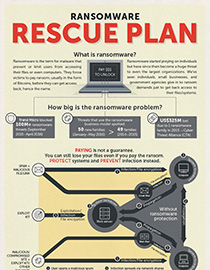RANSOM.WIN32.TRX.XXPE1
Windows


Threat Type: Trojan
Destructiveness: No
Encrypted:
In the wild: Yes
OVERVIEW
Spammed via email, Downloaded from the Internet
This is a detection from the Trend Micro Predictive Machine Learning mechanism. It uses advanced machine learning technology to correlate threat information and perform in-depth analysis to detect emerging unknown security risks. It does this through digital DNA fingerprinting, API mapping, and other file features analysis.
Most ransomware are known to restrict the user from fully accessing the system. Most use a lock screen with a message. The lock screen/message is one of the many ways to tell what kind of ransomware affects a user.
Ransomware encrypts files and demands a ransom to be paid in order to decrypt or unlock the infected machine. Most ransomware instruct users to install and use Tor client when paying. Tor is widely used by ransomware creators since it helps keep their anonymity.
Ransomware infects computers through various means. Most of ransomware come as a macro or JavaScript attachment in spammed email. Some are delivered as a link, also in spammed email. Others are delivered by exploit kits. Some others are delivered via malvertisements or compromised websites.
In addition, some ransomware get information about your computer such as location, operating system, language pack used, etc.
To prevent ransomware, users should use protection that also covers against spam and malicious links. Also, make sure to regularly create backup copies of all important files.

View infographic: Ransomware 101 - What, How, & Why
This Trojan arrives as an attachment to email messages spammed by other malware/grayware or malicious users. It may be unknowingly downloaded by a user while visiting malicious websites.
It is capable of encrypting files in the affected system.
TECHNICAL DETAILS
Varies
Yes
Connects to URLs/IPs, Displays message/message boxes, Encrypts files
Arrival Details
This Trojan arrives as an attachment to email messages spammed by other malware/grayware or malicious users.
It may be unknowingly downloaded by a user while visiting malicious websites.
This malware arrives via the following means:
- Exploit kits
- Compromised sites
- Malvertisements
Other Details
This Trojan is capable of encrypting files in the affected system.
SOLUTION
9.800
Step 1
Scan your computer with your Trend Micro product to delete files detected as RANSOM.WIN32.TRX.XXPE1. If the detected files have already been cleaned, deleted, or quarantined by your Trend Micro product, no further step is required. You may opt to simply delete the quarantined files. Please check this Knowledge Base page for more information.
Step 2
Restore encrypted files from backup.
Did this description help? Tell us how we did.

